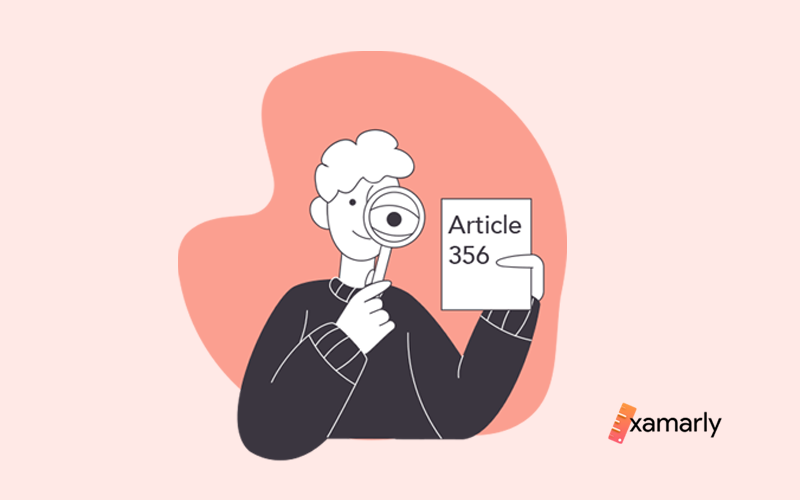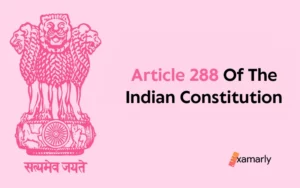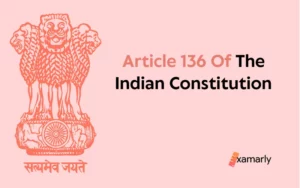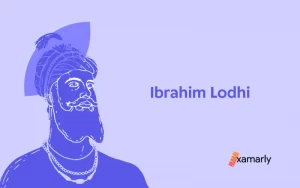The Constitution of India has been carefully written such that there is no confusion regarding the jurisdictions of the state and central government. Yet, there are some particular clauses that ascertain the center’s power over the state. One such is Article 356.
In layman’s terms, Article 356 of Indian Constitution gives power to the President to proclaim a state emergency and take direct control over the state governance. When can this be enacted? Who determines the state of emergency? What are the subsequent procedure and constitutional provisions for establishing Presidential Rule? Is there a chance for misuse of this power? Does this need approval from Judiciary and Parliament? Read on to find out the answers.
What Is Article 356 Of Indian Constitution?
Article 356 gives the President of India the authority to suspend the state government and impose an emergency in a state provided there is a failure of the constitutional machinery or any political crisis. Let us first read what is written in the Constitution and then move on to the nuances of it.
If the President, on receipt of report from the Governor of the State or otherwise, is satisfied that a situation has arisen in which the government of the State cannot be carried on in accordance with the provisions of this Constitution, the President may be Proclaim emergency in a state
The President, being the head of the state of the Republic of India has the power to keep a check on the various state governments. As per the above-mentioned law, the emergency proclamation authority can be exercised if the state government faces a constitutional crisis (i) as understood by the President or (ii) as reported by the state’s Governor to the President.
This statement and its crux can be traced back to Section 39 of the Government of India Act which stated that a similar condition of emergency may be evoked by the governor in case the province is not being run according to the law. Later, in the Indian Constitution, Section 93 was incorporated by replacing ‘governor’ with ‘president’.
While the original intent of Article 356 was to safeguard the country’s independence and stability, it has often been used to overthrow state governments that opposed the center. Its role and ambiguity make it a highly controversial provision. To further understand the loopholes in place, let us first look into the various provisions under Article 365 which allows the proclamation of Presidential Rule.
President Rule Article 356: What Are The Provisions?
The Council of Ministers led by the Cheif Minister of the State ensures the constitutional functioning of a State government. They are responsible to the State Assembly (State Legislative Assembly) or Vidhan Sabha. The Governor of the State is a constitutional head and is appointed by the President. The Governor and Council of Ministers with the Chief Minister as the head constitutes the State Executive. But, when a state government is not functioning constitutionally, President’s direct rule is imposed. In this situation:
- The Council of Ministers is dissolved. The Legislative Assembly of the State is either prolonged or dissolved necessitating a new election.
- The Central rule over the State’s functioning.
- A centrally appointed Governor is given the executive power and the Governor can appoint other administrators. They are usually nonpartisan retired civil servants.
- For such an establishment of President’s Rule parliamentary consent is necessary. Both the Houses of Parliament should approve of the decision within 2 months of its execution.
- 6 months is the period for which a President’s rule can be in effect and which can be extended to a maximum period of 3 years. It has to be granted legislative permission every six months for an extension to be made for 3 years.
Article 356’s Design And Extent
While a constitutional breakdown within a state is a serious matter, the design and extent of Article 356 are less clear. It does deal with the proclamation and imposition of emergency, but the term emergency is not defined thereby making it ambiguous and opening the door to arbitrariness and misuse. Article 356’s nature and scope must be understood in the context of its judicial application. There are two basic features when considering the scope and application of Article 356. As per Article 356, the declaration of proclamation of emergency can be exercised if the state government fails in state governance (i) as observed as the breakdown of law or constitutional mechanism (ii) as understood by the President or Governor
Breakdown Of Constitutional Machinery
A declaration of emergency proclamation is based on the reality concerning the governance of a state. As per Article 356 “the breakdown of constitutional machinery” is a major concern. The breakdown of constitutional machinery implies that the governance of the state is not functioning as per the guidelines in the Constitution. If there is a failure of constitutional machinery, the Union may proclaim an emergency, even in a non-emergency situation. The scope of this provision is to ensure the safety of citizens.
Power Of President And Governor
The authority to send a report informing the failure of a state government is with the governor of the state and the President has the authority to act upon it and proclaim an emergency or even act upon other sources or own judgement to proclaim an emergency. The possibility of the Governor’s actions and the President’s actions being influenced by the interests of certain political parties or ideologies at the center cannot be scarped. In most cases, the final verdict rests on the President’s satisfaction. The President is the highest executive of the state. Because the President’s satisfaction is subjective, there is a severe limitation to the judicial review’s nature and scope.
Misuse of Article 356 is limited by Supreme Court. The decision of the court is the pinnacle of judicial review. Any misuse of Article 356 is limited by the Supreme Court’s decision, however, it will still allow the Central government to encroach upon state government powers without reasonable cause. This has created a dark side in Indian politics.
President Rule In India
The President of India is vested, by the Constitution, with the power to impose President’s Rule in any Indian state if the constitutional machinery is failing. There are two conditions that can allow the proclamation of President’s Rule.
- Approval – For Presidential rule to be imposed parliamentary approval is necessary. Both the Lok Sabha and Rajya Sabha must approve the decision within two months of its issue. This acts as a check for abuse of power.
- Period – Presidential rule is initially fixed for a period of 6 months and can even be extended to a period of 3 years. It can be extended for 3 years only when granted legislative permission every 6 months.
It was proposed in the 44th Amendment of Indian Constitution to make changes in the period of imposition of presidential rule. This amendment limited the period of a Presidential Rule imposition beyond one year. According to the 44th amendment, President’s Rule cannot be prolonged for more than one year unless (i) a case of national emergency thrives in India and (ii) There is a recommendation by the Election Commission of India to continue a Presidential Rule in the state citing problems while conducting elections and government formation in the state.
To read about the process at hand go back to the section on ‘Provisions under Article 365’ in this article.
Also Read: Powers And Functions Of Lok Sabha And Rajya Sabha
Forfeiture Of The President’s Rule
Revocation of Presidential Rule is possible and necessary for the betterment of democracy. Revocation of Presidential Rule happens when the President makes a subsequent proclamation stating so. The Parliament doesn’t need to approve the revocation. This decision can be made anytime. It is usually supported by letters from the leaders of political parties suggesting that the President has the support of the representatives of the people to do so. This letter supports his claim to form or re-form the state government.
Imposition Of President’s Rule In India
When Is The President’s Rule Imposed In A State?
In a statement, a constitutional breakdown can be a reason for the imposition of Presidential rule. The failure of a state government as noted by the Governor or President can escalate to the President invoking Article 356. But, in practice, there are many other situations in which the presidential proclamation has taken place. For instance:
- when a state legislature is unable to elect a chief minister under the prerequisite time given by the Governor
- when the Chief Minister loses majority support due to a coalition government’s breakdown
- when there is a loss of majority because of a vote of no-confidence
- when elections are postponed due to natural disasters, war, epidemics, etc.
Let us briefly look at the reality of the proclamation of Presidential Rule in the Indian States. Given below is a state-wise list of the number of times Presidential Rule has been evoked:
- Andhra Pradesh – 3 times
- Arunachal Pradesh – 2 times
- Assam – 4 times
- Bihar – 8 times
- Goa – 5 times
- Gujarat – 5 times
- Haryana – 3 times
- Himachal Pradesh – 2 times
- Jammu and Kashmir – 6 times
- Jharkhand – 3 times
- Karnataka – 6 times
- Kerala – 4 times
- Madhya Pradesh – 4 times
- Maharashtra – 2 times
- Manipur – 10 times
- Meghalaya – 2 times
- Mizoram – 3 times
- Nagaland – 4 times
- Orissa – 6 times
- Punjab – 9 times
- Rajasthan – 4 times
- Sikkim – 2 times
- Tamil Nadu – 5 times
- Tripura – 3 times
- West Bengal – 4 times
- Uttar Pradesh – 9 times
Imposition In Union territories
There is an unusual and controversial provision in the Constitution for President rule to be proclaimed in Union territories of India. The Supreme Court in March 1994, laid down a precedent that has drastically reduced abuses of the President’s rule. However, this precedent is not applicable to Union territories and thus the proclamation of the President’s rule in Union territories is still possible, even though it is not mandatory. Delhi has seen a period of Presidential rule 1 time and Pondicherry 6 times.
Also Read: Advisory Jurisdiction Of Supreme Court
Abuse Of Article 356 Of The Indian Constitution
During the 1950s, successive governments at the Centre misused Article 356 to remove majority governments. The article was repeatedly invoked for political reasons and to remove state governments. Abuse of power by people in authoritative roles is unavoidable. Indira Gandhi misused the clause between the years 1966-1977 and it was used around 39 times in various states.
The Supreme Court established the Sarkaria Commission to review the functioning of the Indian constitution. It recommended that Article 356 be proclaimed only in the most critical situations. In case of a breakdown in their Constitutional machinery, this article provides some remedies for state governments. The commission also discourages the literal construction of Article 356(1) and instead recommends that it should only be used in emergency situations when no other remedies are available.
In the 1994 landmark judgement in the S. R. Bommai V. Union of India case, the Supreme Court of India laid down strict guidelines for the proclamation of Article 356. The case of S.R. Bommai showed that Article 356 was vague and could allow the union to dominate a state. While there was a prevailing consensus against repealing the Article, a plethora of concerns remained over its use.
In the end, the Union Government did not impose President’s Rule in India. According to the Supreme Court, Presidential Rule is subject to judicial scrutiny and the exercise of power must be justified by the President. Further, the court reserves the power to question Presidential Rule and also to dissolve state governments. The power of the judiciary got highlighted as a part of this ruling. Thus, a wider development was attained by Article 356 in the Bommai case for the proclamation of Presidential Rule.
Conclusion
B.R. Ambedkar, when questioned about Article 356’s corruptive nature, reciprocated that it should not be grounds for scrapping a law. Any and every law can turn out to be corruptive when held in the wrong hands. Instead, the need is to keep a check on the absolute power given to people in charge.
Equally important is the fact that the Presidential rule proclamation in an Indian state is a political crisis that violates the nation’s federal structure. In some cases, it might help the state become constitutional and bestow upon it a stable government. Yet, in many other circumstances, the President’s Rule and proclamation of emergency provisions may not be appropriate for a democratic rule. Nevertheless, it is a relevant material to study within Indian Polity for UPSC Preparation.






